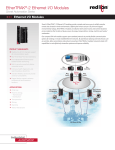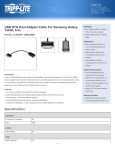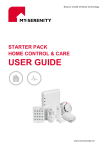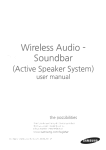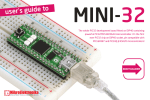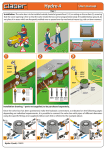Download Accord User Manual - Assure Alarms Ltd
Transcript
CONTENTS Full Set [1] ..........................................2 Part Set [2] .........................................2 Night Set [3]........................................3 Unsetting ............................................3 Unsetting after or during an alarm.......3 Testing the system [5].........................3 Isolating zones [6]...............................4 Reprogramming codes [8]...................4 Chime facility [9] .................................5 Viewing the alarm Log [0] ...................5 Indicators and what they mean ...........6 System settings ..................................7 System limitations ..............................8 USER INSTRUCTIONS FULL SET [1] All system detectors must be clear before setting. To start the Full setting of the system enter your User Code then press the 1 (Full Set) key. A constant exit tone will be heard which changes to an interupted tone as you pass and activate the detectors on the exit route. The Day LED on the keypad flashes during the exit period. The last detector on the exit route does not cause an interupted tone. To cancel the system setting press the √ (Escape) key. When the system has set, you will hear two confirmation beeps. After this the √ key will not function. Easy Set – if programmed, allows you may start the system setting by pressing the # key then the 1 (Full Set) key. PART SET [2] To Part Set the alarm system enter your User Code then press the 2 (Part Set) key. This sets a sub-part of the system and leaves the rest unset – the installation engineer will advise you on how your system has been programmed for Part Set, also see System Settings on Page 7. To cancel the setting press the √ (Escape) key. The setting routine is as described in Full Set [1]. Easy Set – if programmed, allows you may start the system Part setting by pressing the # key then the 2 (Part Set) key. 2 NIGHT SET [3] To Night Set the alarm system enter your User Code then press the 3 (Night Set) key. This sets a sub-part of the system and leaves the rest unset, this would allow you to set downstairs areas while leaving the upstairs areas unset for instance – the installation engineer will advise you on how your system has been programmed for Night Set, also see System Settings on Page 7. To cancel the setting press the √ (Escape) key. The setting routine is as described in Full Set [1]. Easy Set – if programmed, allows you may start the system Night setting by pressing the # key then the 3 (Night Set) key. UNSETTING To Unset the system go to the keypad via the agreed entry route and enter your User Code. UNSETTING AFTER OR DURING AN ALARM To stop an alarm that is in progress enter your User Code. The zone that caused the alarm is indicated on the Zone LEDs on the keypad. To reset the system TESTING THE ALARM [5] SYSTEM To Test the system enter your User Code then press the 5 (Test) key. The external bell/sounder rings for five seconds and the strobe flashes and all the zone LEDs on the keypad light for five seconds. 3 Activate each zone in turn – with each zone activation the zone LED lights and the keypad emits two beeps. To exit Test Mode, enter your User Code: the keypad beeps twice and the strobe stops flashing. ZONE ISOLATION [6] To manually isolate (by-pass) one or more zones enter your User Code, press the 6 (Isolate) key and then press the zone numbers that you wish to Isolate; then press the √ key . To isolate zone 4 and 8 enter 1234 6 4 8. The zone 4 and 8 LEDs on the keypad now flash. To delete all zones from the isolation list enter your User Code, press the 6 (Isolate) key then press the √ key. Once zones have been isolated the system may be set in the normal way. When the system is next unset all zones will be unisolated. Fire and PA zones can not be isolated. CHANGING CODES [8] The alarm system can have up to eight separate user codes. User 1 is the Master User of the system. To change a code enter the code (or the Master User Code), press 8 (Code), then the user number (1—8) and then the new code. For example to change the Master User Code from the default (1234) to 7658: 1234 8 1 5678. MASTER CODE is now 5678. 4 Two beeps confirm that the code has been accepted. The Master User Code is also needed to programme other User Codes into the system. For example, to programme in a new User Code: enter the Master User Code, press 8 (Code), then the user number (say 2), 5678 8 2 4321. USER 2 is now 4321. Once a user has been programmed with a User Code the user can re-programme their own code, ie entering: 4321 8 2 9876 would re-programme user 2 as 9876. Any user may delete their own code by: entering their code + 8 + User No + √, ie: 9876 8 2 √ User 2 is now deleted. The Master User Code can reprogramme or delete any user. CHIME FACILITY [9] Any zone can be programmed to give a Chime (two beeps from the keypad and internal sounder) when you activate the zone. To do this enter your code, press 9 (Chime) then the zone(s) you want to Chime. Press the √ key to finish or wait for a confirmation beep. To remove all zones from the Chime list, enter your code and press the 9 (Chime) key, wait for a confirmation beep then press the √ key. VIEWING THE LOG [0] The last 16 zone activations can be viewed by entering your code then pressing the 0 key. The most recent zones activations are 5 displayed first, indicated by the zone LED and a beep. INDICATIONS AND WHAT THEY MEAN POWER – There is one power LED at the control unit and one on each keypad. If the Power LEDs are on then there are no problems with the a.c. mains supply, if the Power LEDs are off this indicates an a.c. mains failure. An a.c. mains failure may be accompanied by an audible warning (if programmed). This can be silenced by entering a valid code. If the Power LEDs are flashing contact your Alarm Company. Do not press any keys. TAMPER – If the Tampers LED on the keypad(s) is on one of the system devices has been tampered with. Contact your Alarm Company for advise. DAY LEDs ‘On’ – This indicates that the sytem is unset. ‘Flashing’ – This indicates that the system is setting. The LED will extinguish when the system has successfully set. ZONE LEDs ‘On’ – This indicates that the zone has caused an alarm or the zone is not clear during the setting procedure. If you are in the Test mode it indicates that the zone has been successfully tested. ‘Flashing’ – This means that the zone has been Isolated. ‘Off’ – This is the normal condition for zone LEDs. 6 ‘All LEDs On’ – This indicates a Panic Alarm from the √ + # keys. YOUR ALARM SYSTEM SETTINGS ZONE FULL PART SET SET NIGHT SET 1 2 3 4 5 6 7 8 zones which are active in each set mode. If two zone LEDs are scrolling up and down, then the keypad lockout is in effect. This will last for 10 minutes and is caused by 20 key presses without a valid code sequence. The keypad will not respond to a user code during this period. 7 LOCATION Full Set Entry time....................(seconds) Full Set Exit time..................….(seconds) Easyarm: Yes / No Alarm Company Day ......................... Alarm Company Night ........................ Keypad Panic enabled ( √ + #): Yes/No LIMITATIONS WARNING THE LIMITATIONS OF THIS ALARM SYSTEM While this system is an advanced design security system, it does not offer guaranteed protection against burglary, fire or other emergency. An alarm system, whether commercial or residential, is subject to compromise or failure to warn for a number of reasons. For example: 8 • • • • • • • Intruders may gain access through unprotected openings or have the technical sophistication to bypass an alarm sensor or disconnect an alarm warning device. Intrusion detectors (e.g. passive infrared detectors), smoke detectors, and many other sensing devices will not work without power. Battery operated devices will not work without batteries, with dead batteries, or if the batteries are not put in properly. Devices powered solely by AC will not work if their AC power supply is cut off for any reason, however briefly. A user may not be able to reacha P.A. or emergency button quickly enough. While smoke detectors have played a key role in reducing residential fire deaths, they may not activate or provide early warning for a variety of reasons in as many as 35% of all fires. Some of the reasons smoke detectors used in conjunction with this System may not work are as follows. Smoke detectors may have been improperly installed and positioned. Smoke detectors may not sense fires that start where smoke cannot reach the detectors, such as in chimneys, in walls, or roofs, or on the other side of closed doors. Smoke detectors also may not sense a fire on another level of a residence or building. A second floor detector, for example, may not sense a first floor or basement fire. Moreover, smoke detectors have sensing limitations. No smoke detector can sense every kind of fire every time. In general, detectors may not always warn about fires caused by carelessness and safety hazards like smoking in bed, violent explosions, escaping gas, improper storage or flammable materials, overloaded electrical circuits, children playing with matches, or arson. Depending on the nature of the fire and/or the location of the smoke detectors, the detector, even if it operates as anticipated, may not provide sufficient warning to allow all occupants to escape in time to prevent injury or death. Passive Infrared Motion Detectors can only detect intrusion within the designed ranges as diagrammed in their installation manual. Passive Infrared Detectors do not provide volumetric area protection. They do create multiple beams of protection, and intrusion can only be detected in unobstructed areas covered by the beams. They cannot detect motion or intrusion that takes place behind walls, ceilings, floors, closed doors, glass partitions, glass doors, or windows. Mechanical tampering, masking, painting or spraying of any material on the mirrors, windows or any part of the optical system can reduce their detection ability. Passive Infrared Detectors sense changes in temperature; however, as the ambient temperature of the protected area approaches the temperature range of 32–40 °C, the detection performance can decrease. Alarm warning devicessuch as sirens, bells or horns may not alert people or wake up sleepers who are located on the other side of a closed or partly open doors. If warning device sound on a different level of the residence from the bedrooms, then they are less likely to waken or alert people inside the bedrooms. Even persons who are awake may not hear the warning if the alarm is muffle by noise from a stereo, air conditioner or other appliances, or by passing traffic. Finally, alarm warning devices, however loud, may not warn hearingimpaired people or waken deep sleepers. Telephone lines needed to transmit alarm signals from a premises to a central monitoring station may be out of 9 • • service or temporarily out of service. Telephone lines are also subject to compromise by sophisticated intruders. Even if the system responds to the emergency as intended, however, occupants may have insufficient time to protect themselves from the emergency situation. In the case of a monitored alarm system, authorities may not respond appropriately. This equipment, like other electrical devices, is subject to component failure. Even though this equipment is designed to last as long as 10 years, the electronic components could fail at any time. The most common cause of an alarm system not functioning when an intrusion or fire occurs is inadequate maintenance. This alarm system should be tested weekly to make sure all sensors are working properly. Installing an alarm system may make one eligible for lower insurance rates, but an alarm system is not a substitute for insurance. Homeowners, property owners and renters should continue to act prudently in protecting themselves and continue to insure their lives and property. We continue to develop new and improved protection devices. Users of alarm systems owe it to themselves and their loved ones to learn about these developments. IU1-1200 06/98 10










